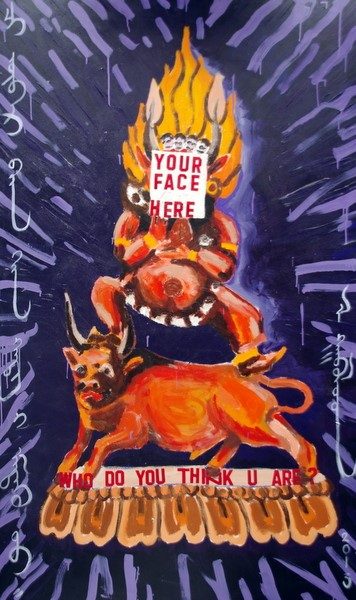
New Treasures: Gawaa Lundaa
By Monique Choy
When Mongolian artist Gawaa Lundaa looks at the tangled wires lacing telephone poles in Sydney’s inner west, he doesn’t see a messy, superseded eyesore. He sees a symbol of the loss of human connection. And he is inspired to paint.
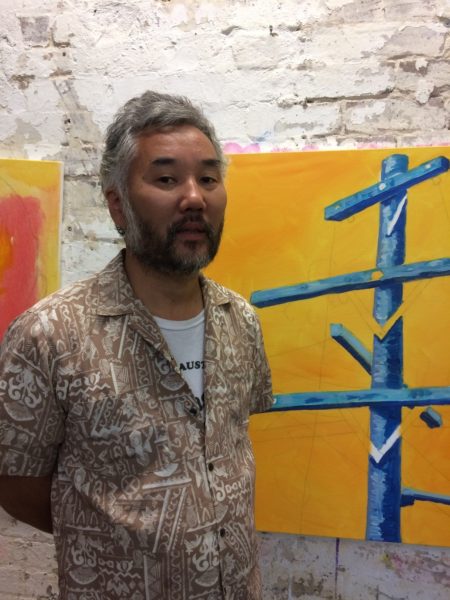
Gawaa was born in a rural village in the Gobi Desert in 1975. ‘We don’t have many power poles like this. I just imagine how long people have been connecting through those wires, with telephones and everything that’s going through. This is like one of the real connections between people and the community here. And they’re beautiful objects.

‘But now they’re disappearing and they’re putting them underground because the wi-fi is coming. And I feel like the power pole is like a part of the last connection between people, the last real communication between people.’
Gawaa is a painter, sculptor, photographer, video and mixed-media artist. His works are humorous, daring and colourful commentaries on identity, modernity and authenticity, often taking playful aim at Australia’s sacred cows.
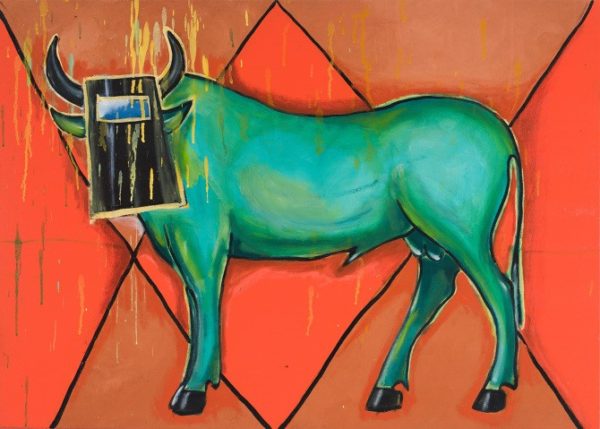
‘The latest painting I’m doing is Ned Kelly driving his horse-motorbike hybrid thing. That’s like, to me, being in the desert riding a horse, and you know, riding motorbikes. Now living in Australia, I don’t have any of those things. But I think I’m really influenced by both, the Mongolian side and the Australian.
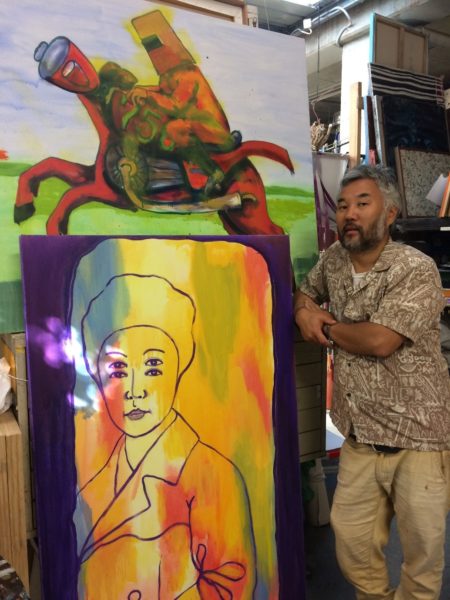
Gawaa has exhibited widely, including at exhibitions at Stirrup Gallery, Chrissie Cotter Gallery, Alpha Gallery, 107 Projects, M2 and Tortuga Gallery in Sydney, as well as shows in Mongolia, Italy, Melbourne, Braidwood and Mongolia. He often works with typography, inspired by the weird misalignments that can occur when learning a new language, and the barriers that language can create. ‘When I started doing art, I wanted to kind of reject Western culture. Stuff like, bullshit, this seems like bullshit, you know? And that started my typography and text-based artwork. It’s been like finding how to fit in in the culture but still living a little bit against it, you know: oh this is bullshit you guys — you’re just going to live life, work and die. And it’ll just be in a concrete jungle in a rat race. Because I’m an outsider I can see that.’
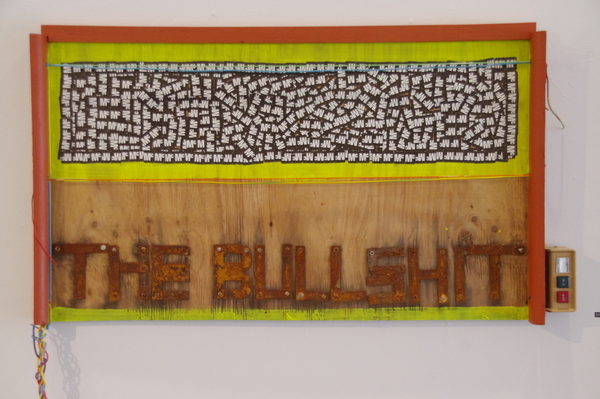
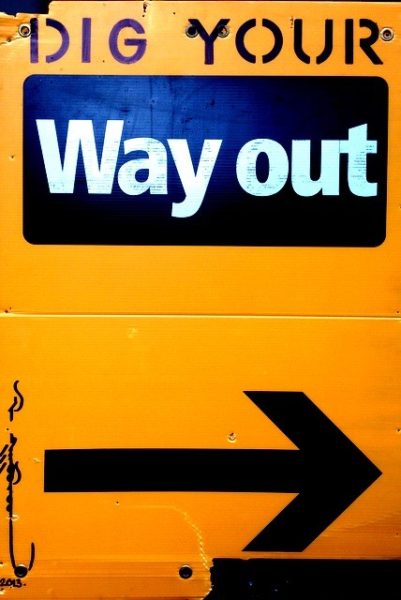

Gawaa lives and works at Alpha House, an artist cooperative in Erskineville, one of the only artist housing co-ops in the country. Here, 12 interconnected townhouses with attached studios and shared gardens provide a fertile creative collaboration space where dozens of working artists live communally. When Gawaa moved to Alpha in 2010 he felt immediately at home.
‘When I lived in the countryside in Mongolia, my era was the end of communism in Mongolia, when we were controlled by Russia. Back then basically we were living in a community with everything controlled from the government in a communist way,’ he says. ‘It’s quite interesting, you think back sometimes and it’s like wow ok, I love it at Alpha. Why? Because that’s how I grew up, in a little village in a community.’
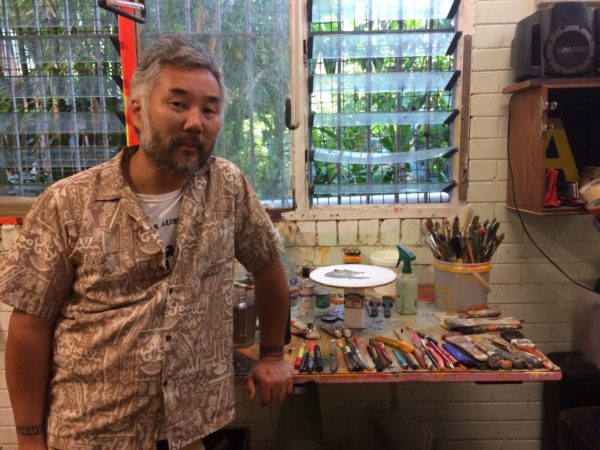
But Gawaa’s communal life changed fast with the Mongolian Revolution in 1990. His education was cut short when he was 15, and after a stint in his late teens as a nomadic herdsman on camel and horseback (you can still see those far horizons in many of his works), he joined his father in the capital, Ulaanbaatar, to find a place in the post-revolutionary economy. He began to work with USAID, where he met American Mark Stibich who encouraged his art.
‘I met this guy and he really believed that I’m an artist. He said you should come and see some art in America,’ he says. ‘And when we went he really took me around, New York, DC, everywhere, just showed me the art. And since then, I was like wow, I can do this kind of thing. Inside I felt like, yeah I’m a person who can do something like this.’
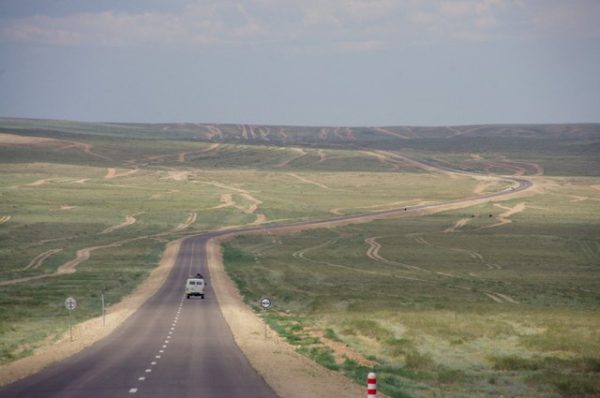
Back in Mongolia, Gawaa began to draw and paint. But it was love that brought him to Australia when he met his partner Jessie Stanley.
‘I just met an Australian woman and I came to Australia in 2003. Yeah it was love. And I had to start a family, you know, just doing ordinary jobs just for a while with everything, my ex-wife was studying and I hadn’t really had a chance to start art, after five years, six years, the marriage broke down and I just went to art school. I just said, that’s it! I went to the St George TAFE, St George Institute of Fine Arts in 2008.’
It was the push he needed, and Gawaa has never looked back. In the last 10 years he has exhibited every year, both in Australia and in Mongolia, and led trips for artist back to his homeland.
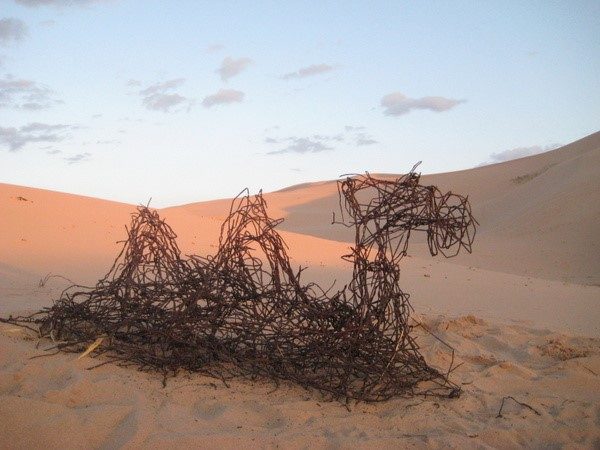
Another inspiration for Gawaa is making use of the things we discard. ‘Coming from really clean, empty desert, there’s not much rubbish or anything, nothing has been wasted, and when you come to a big town like Sydney, mega rich, there’s just rubbish everywhere. And when you go to a council clean-up, or you’re walking the street, you find some new treasures. I’m trying to use them, reuse them to do little sculptures and that’s why I’ve started doing lots of mixed medium artworks.’
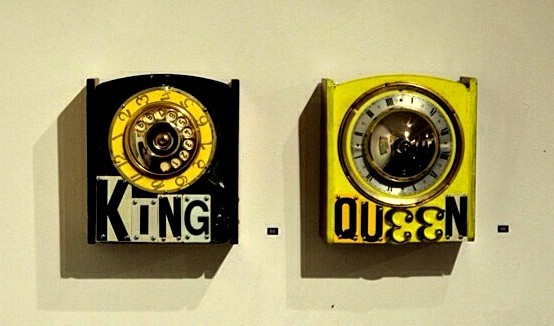
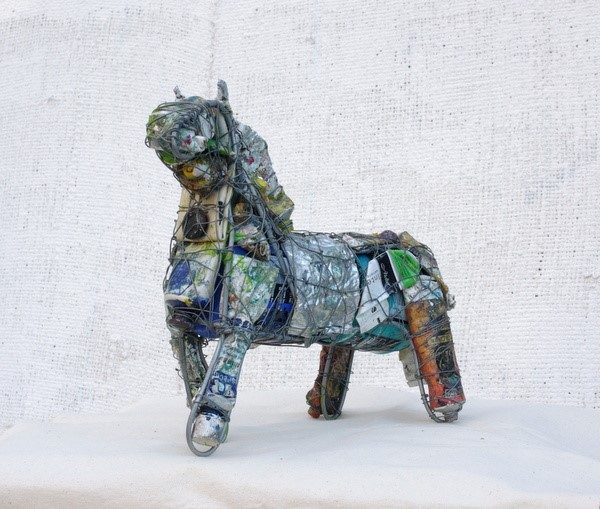
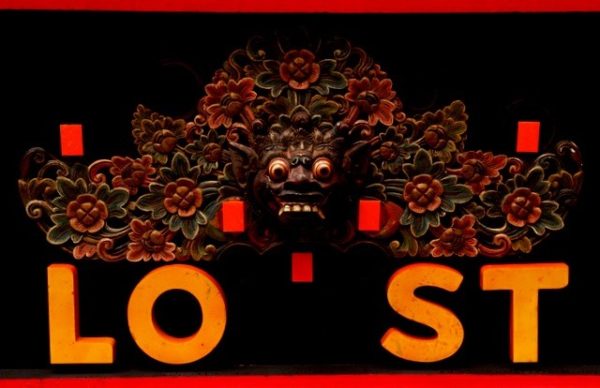
Identity also forms a huge part of Gawaa’s work. ‘It’s a big part I think because I’m from a really different culture, like almost 360 degrees, I feel like my heart is turned around, just to fit into this country, you know, learning a language, learning a lifestyle and learning a lot of things, it’s quite a big journey and I feel like I’m stuck between two cultures now. But I’m Mongolian. I was born in Mongolia.’

